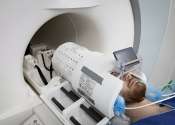Eye infections might seem like a minor complaint, but in some cases they can cause blindness and even death
When you think of eye infections, what comes to mind? Puffy, swollen bruised feeling eyelids that get glued together with gunk overnight? That feeling of having grit in your eye that can't be cleaned away? Eye infections ...
Apr 11, 2024
0
1









